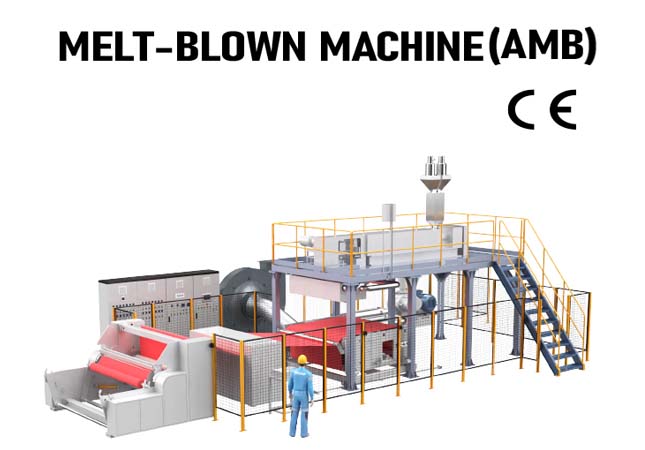The non woven fabric industry now becomes a segmented industry due to the growing innovative industrial applications of nonwoven technologies such as needle punching, hydroentangling, thermal bonding or chemical bonding in the traditional textile industry, and the optimization of non wove fabric slitting machine manufacturing industry.

The principle of non woven fabrics is to directly use polymer slices, short fibers or filaments to orientate or randomly arrange to form a fiber mesh structure, usually need completed by a series of non woven fabric slitting machine, then use various methods such as acupuncture, spunlace, thermal bonding or chemical to reinforce it, finally finish the molding.
Industry Analysis
1. Characteristics
Weaving and knitting are 2 main methods of making traditional textile fabrics, generally by spinning fibers into yarns, and then weaving the yarns to form fabrics. It is a time-cost process and also requires a number of workers.
Nonwoven technology can directly use high polymer chips, short fibers or filaments for orientation or random arrangement to form a web structure, which is then reinforced by needle punching, spunlace, thermal bonding or chemical methods, and finally finished and formed, which is without the spinning process.
The nonwoven fabric industry is featured by the automation and digitization of production equipment, interdisciplinary composite production technology, fast innovation speed, short production process flow and high production efficiency that compared to traditional textile industry.
2. Trends
The nonwoven fabric industry development is mainly lies in its technological innovation and the application of the products.
In terms of technological innovation, the first is to further enrich the functional characteristics of products through the development of multi-process composite, functional finishing, post-processing and other technologies, and to develop differentiated products that can be adapted to different needs. The innovation of the process further improves the production efficiency of the industry, and finally realizes the development of automation, digitalization, intelligent manufacturing and green manufacturing. In terms of product application, it is going to further expand the industrial application of nonwoven fabrics.
Market Analysis
1. Development History
The nonwoven fabric industry originated in Europe and the United States in the 1950s, and was introduced to China for industrial production in the late 1970s. In the process of development, nonwoven fabrics have gradually evolved into a variety of processes such as spunbond, needle punch, hydroentanglement, chemical bonding, thermal bonding, air laying, wet laying, and melt blowing. According to the statistics of China Industrial Textiles Industry Association, the production process of China's nonwoven fabric industry is mainly spunbond. In 2019, the output of spunbond nonwoven fabrics was 3.0943 million tons, accounting for 49.80% of the total output of nonwoven fabrics, followed by acupuncture process accounting for 23.03%, spunlace process accounting for 11.23%, chemical bonding process accounting for 6.43%, thermal bonding process accounting for 5.33%, airlaid technology accounting for 2.47%, meltblown process accounting for 1.07%, and the wet process accounting for 0.64%.
2. Features and Advantages
Compared with traditional textiles, nonwoven fabrics have the following three major advantages: First, nonwoven fabrics have a wide range of raw materials and strong adaptability, and most of the natural and non-natural chemical fibers can be used for nonwoven fabric production. Second, nonwoven fabrics have a unique engineering structure and flexible production processes. Through various subsequent finishing processes, textiles with various functional characteristics can be produced, including filtration, reinforcement, isolation, etc., so their application range is wider. And it is expandable. Third, the production process of nonwoven fabrics is short, the number of labor is small, and the comprehensive cost is low. It has unique advantages in the field of many one-off consumption.
Based on the advantages of nonwoven technology and product performance, the nonwoven fabric industry has developed rapidly in many countries. At present, China has become the world's largest nonwoven fabric producer and consumer. According to the statistics of China Industrial Textiles Industry Association, in terms of investment in fixed assets of nonwoven fabrics, the country has been increasing investment in recent years.
3. Industry Prospects
In terms of application fields, the current application of nonwoven fabrics focuses on the penetration of high-tech and the use of new materials. The market volume of textiles for vehicles, footwear and artificial leather is also showing a new atmosphere. With its high added value and high efficiency competitive advantages, nonwoven fabrics have huge potential in the industry.
4. Competitive Analysis
The development differentiation of enterprises in the industry has initially appeared, and a few outstanding enterprises have come to the fore. In recent years, with the development of the industry, some advantageous enterprises in the industry have accelerated their development by virtue of their advantages in scale, capital, technology and operation, focusing on the mining of production processes, the expansion of product types and the improvement of product quality. The improvement has enabled a few companies to establish a good reputation and brand influence in the industry first.




